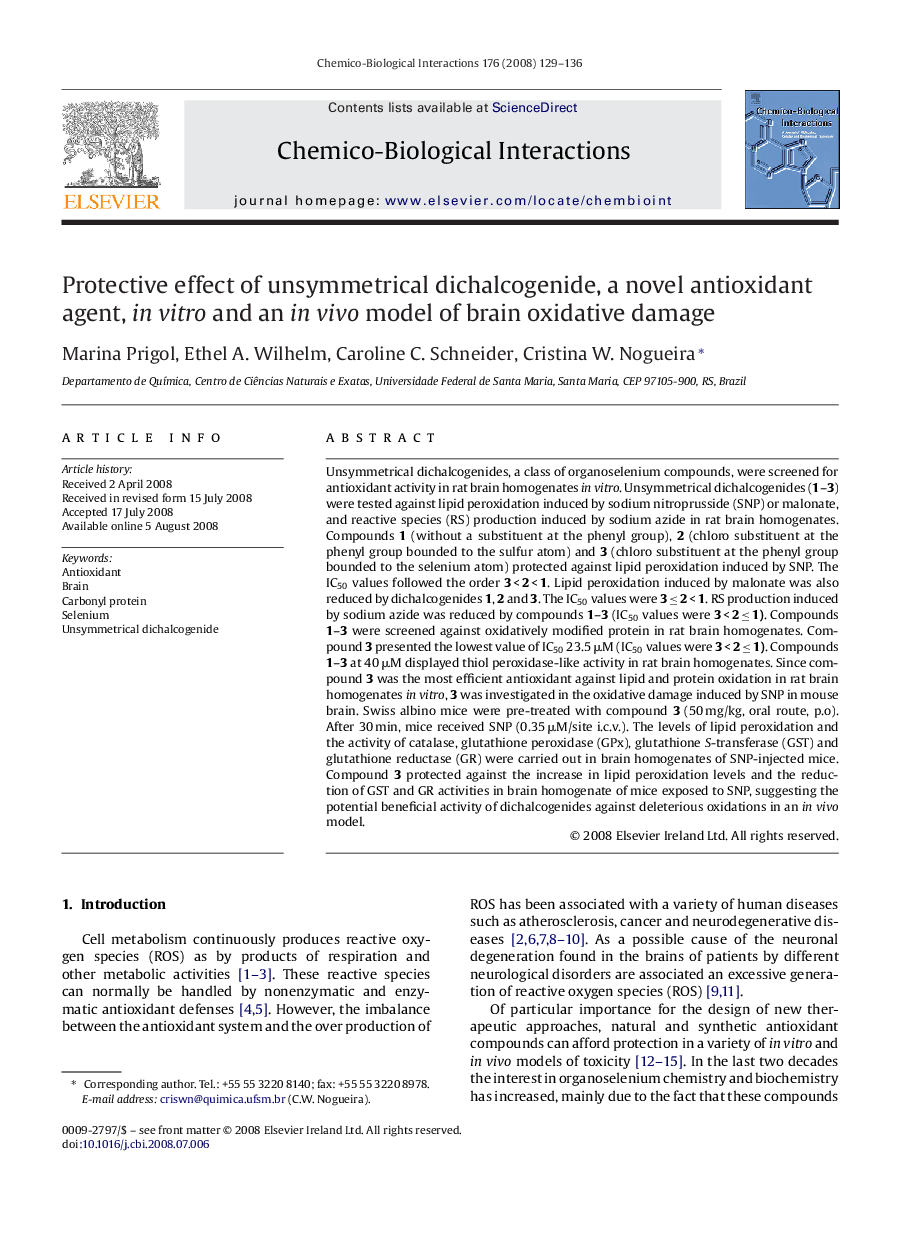| Article ID | Journal | Published Year | Pages | File Type |
|---|---|---|---|---|
| 2582417 | Chemico-Biological Interactions | 2008 | 8 Pages |
Unsymmetrical dichalcogenides, a class of organoselenium compounds, were screened for antioxidant activity in rat brain homogenates in vitro. Unsymmetrical dichalcogenides (1–3) were tested against lipid peroxidation induced by sodium nitroprusside (SNP) or malonate, and reactive species (RS) production induced by sodium azide in rat brain homogenates. Compounds 1 (without a substituent at the phenyl group), 2 (chloro substituent at the phenyl group bounded to the sulfur atom) and 3 (chloro substituent at the phenyl group bounded to the selenium atom) protected against lipid peroxidation induced by SNP. The IC50 values followed the order 3 < 2 < 1. Lipid peroxidation induced by malonate was also reduced by dichalcogenides 1, 2 and 3. The IC50 values were 3 ≤ 2 < 1. RS production induced by sodium azide was reduced by compounds 1–3 (IC50 values were 3 < 2 ≤ 1). Compounds 1–3 were screened against oxidatively modified protein in rat brain homogenates. Compound 3 presented the lowest value of IC50 23.5 μM (IC50 values were 3 < 2 ≤ 1). Compounds 1–3 at 40 μM displayed thiol peroxidase-like activity in rat brain homogenates. Since compound 3 was the most efficient antioxidant against lipid and protein oxidation in rat brain homogenates in vitro, 3 was investigated in the oxidative damage induced by SNP in mouse brain. Swiss albino mice were pre-treated with compound 3 (50 mg/kg, oral route, p.o). After 30 min, mice received SNP (0.35 μM/site i.c.v.). The levels of lipid peroxidation and the activity of catalase, glutathione peroxidase (GPx), glutathione S-transferase (GST) and glutathione reductase (GR) were carried out in brain homogenates of SNP-injected mice. Compound 3 protected against the increase in lipid peroxidation levels and the reduction of GST and GR activities in brain homogenate of mice exposed to SNP, suggesting the potential beneficial activity of dichalcogenides against deleterious oxidations in an in vivo model.
